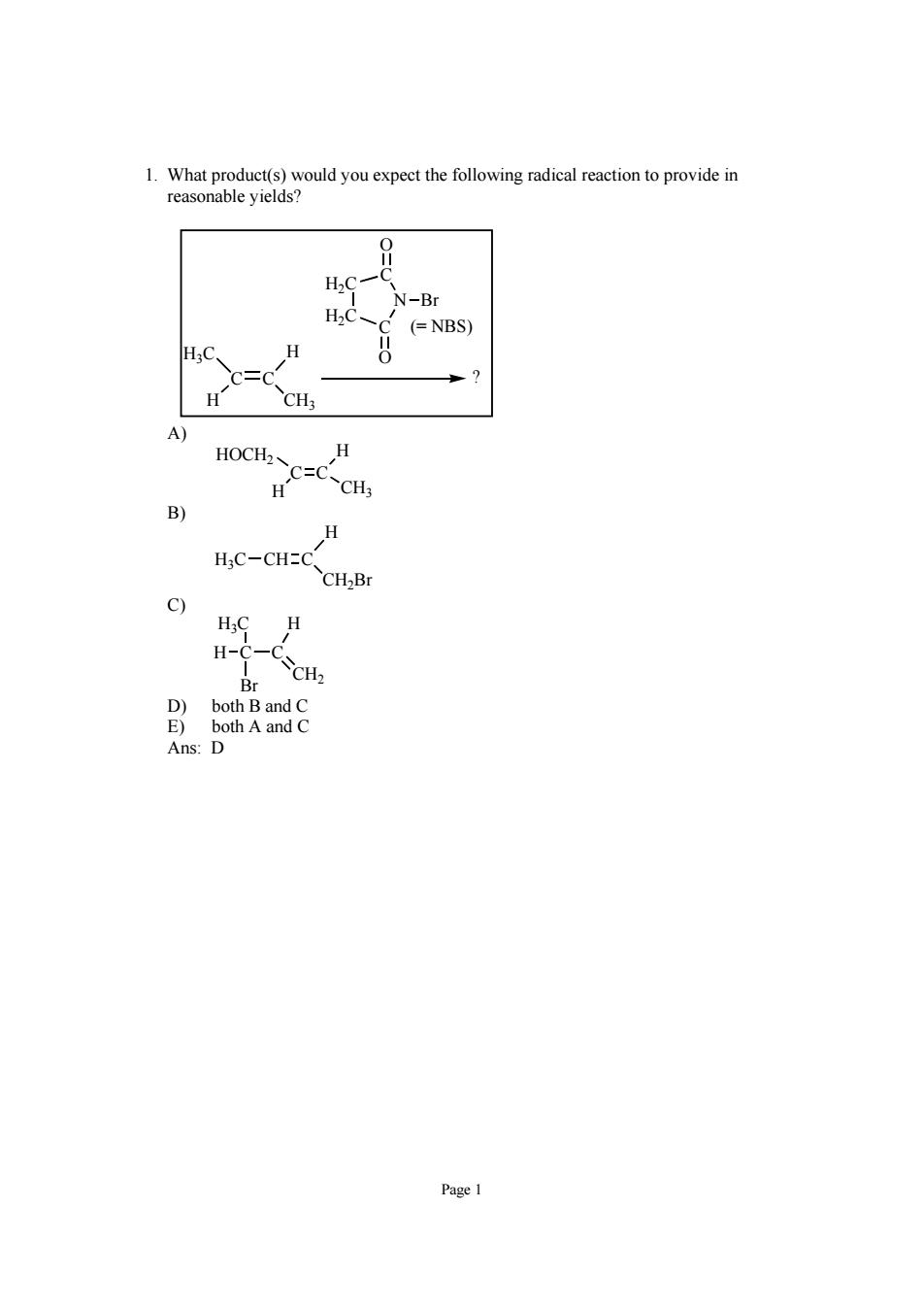
1.What product(s)would you expect the following radical reaction to provide in reasonable yields H2C- HC. N-Br (∈NBS H CH3 HOCH2、 H H C=C-CH3 B) H H3C-CH=C HC H H一 CH-
Page 1 1. What product(s) would you expect the following radical reaction to provide in reasonable yields? H3C C H C CH3 H H2C H2C C N C O O Br ? (= NBS) A) C C CH3 HOCH H 2 H B) H3C CH C CH2Br H C) H3C H C C CH2 H Br D) both B and C E) both A and C Ans: D
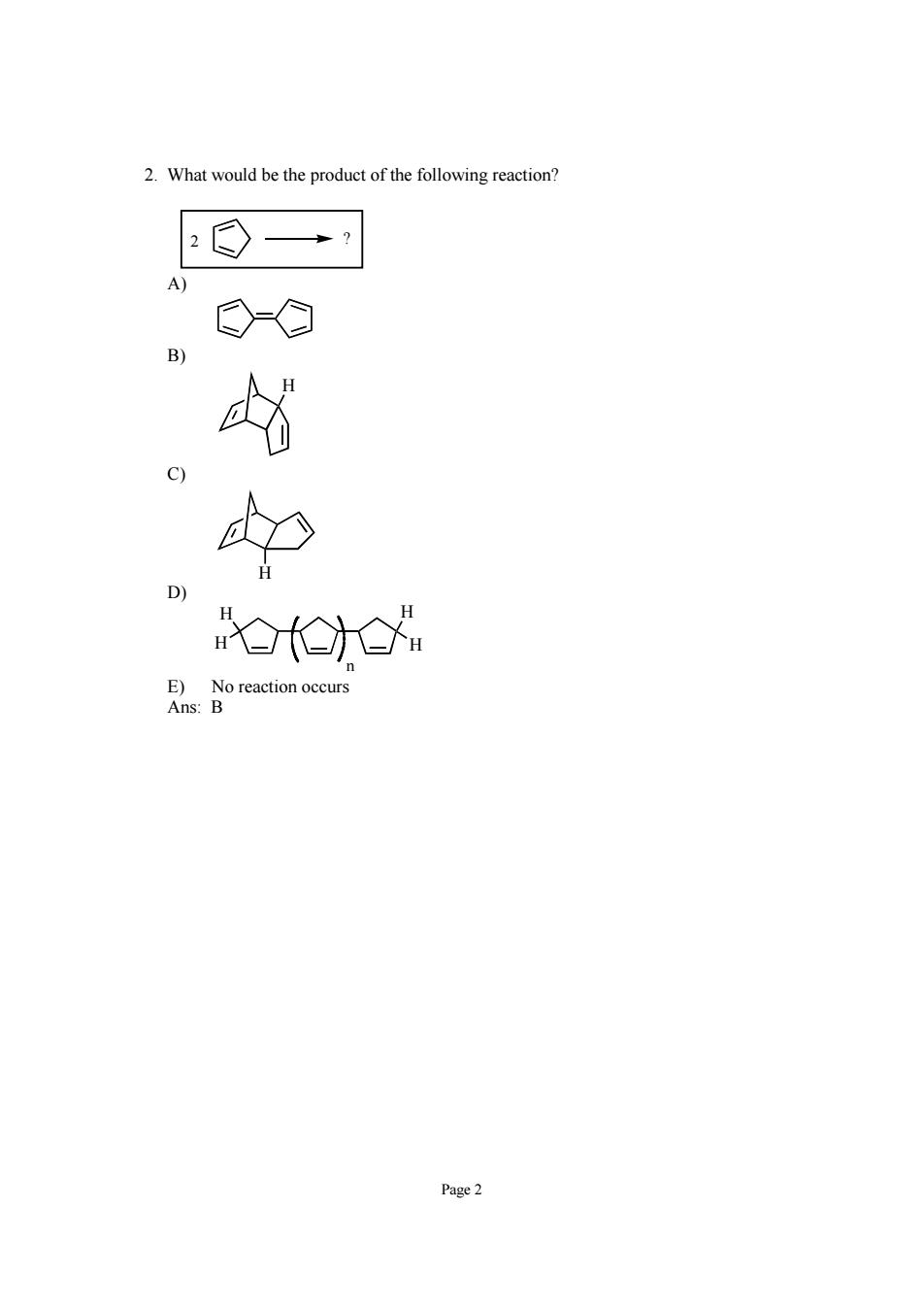
2.What would be the product of the following reaction? 2Q→? O-0 站 o Page2
Page 2 2. What would be the product of the following reaction? 2 ? A) B) H C) H D) H H H H n E) No reaction occurs Ans: B
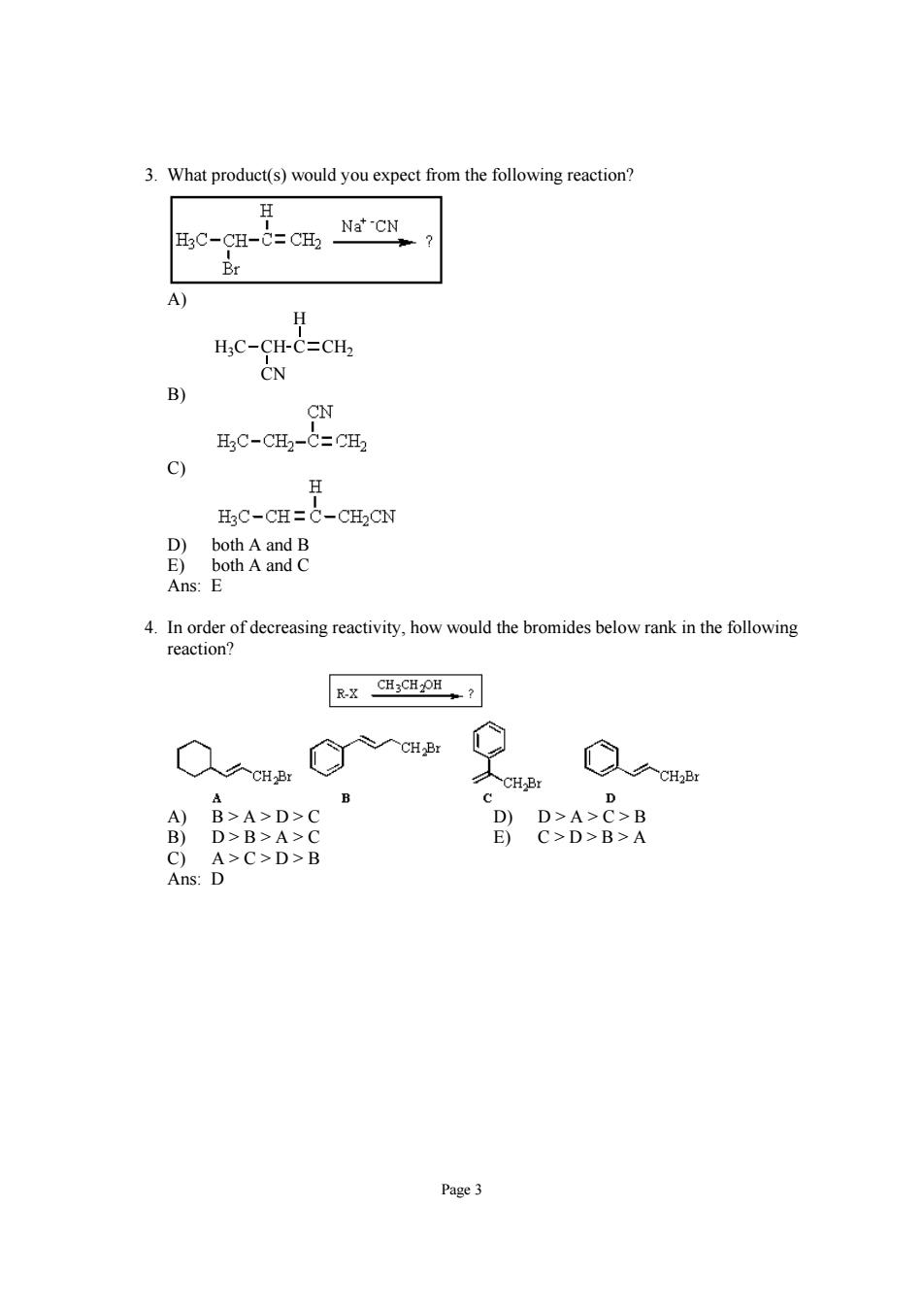
3.What product(s)would you expect from the following reaction? C-CH-0=CE NaCN H;C-CH-C=CHz B CN H3C-CH2-C=CH2 9 HC-CH=C-CH2CN D)both A and B E)both A and C Ans:E zaom司 H CH Br R>A>D>C B >C>D>B Ans:D Page 3
Page 3 3. What product(s) would you expect from the following reaction? A) H3C CH C CH2 H CN B) C) D) both A and B E) both A and C Ans: E 4. In order of decreasing reactivity, how would the bromides below rank in the following reaction? A) B > A > D > C D) D > A > C > B B) D > B > A > C E) C > D > B > A C) A > C > D > B Ans: D

5.What would be the final product(s)of the following reactions? C=C 2.CH20 H (CH3)NCH2CH2N(CH3)3.H2O HOCH、 H 0-c H H H C=CCH2-CH2OH H c) CH2OH Ans:B Page4
Page 4 5. What would be the final product(s) of the following reactions? H3C C C H H H 2. CH2O 3. H2O 1. CH3CH2CH2CH2Li (CH3)2NCH2CH2N(CH3)2 ? A) C C CH3 HOCH H 2 H B) CH2 C C H H H CH2OH C) H2C C CH3 CH2OH D) both A and B E) both A and C Ans: B
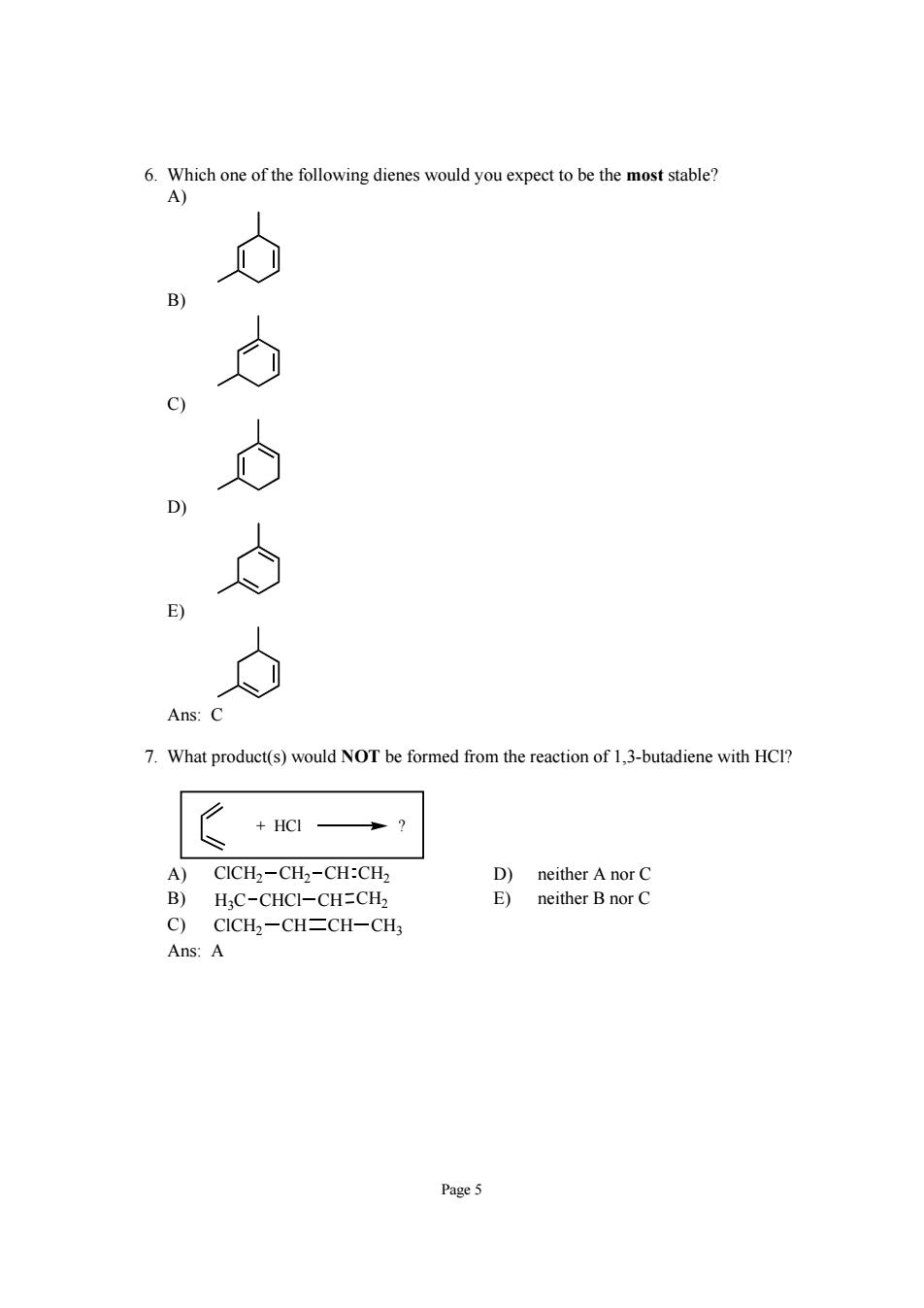
6.Which one of the following dienes would you expect to be the most stable? A) Ans:C 7.What product(s)would NOT be formed from the reaction of 1.3-butadiene with HCI? +HC→ 2 A)CICH2-CH2-CH:CH2 D)neither A nor C B)H:C-CHCI-CH=CH2 E)neither B nor C CICH2-CH=CH-CH Ans:A Page5
Page 5 6. Which one of the following dienes would you expect to be the most stable? A) B) C) D) E) Ans: C 7. What product(s) would NOT be formed from the reaction of 1,3-butadiene with HCl? + HCl ? A) ClCH2 CH2 CH CH2 D) neither A nor C B) H3C CHCl CH CH2 E) neither B nor C C) ClCH2 CH CH CH3 Ans: A

8.What would be the major product of the following reaction? 9.UV-visible spectroscopy involves what type of phenomenon? Binding of chemical bonds Nuclear spin transitions Electron transitions between orbitals E) gMoleularolatons Stretching of chemical bonds Page6
Page 6 8. What would be the major product of the following reaction? H CN NC H + ? A) CN CN B) CN H HCN C) CN H HCN D) CN CN HH E) CN CN Ans: D 9. UV-visible spectroscopy involves what type of phenomenon? A) Binding of chemical bonds D) Nuclear spin transitions B) Electron transitions between orbitals E) Stretching of chemical bonds C) Molecular rotations Ans: B
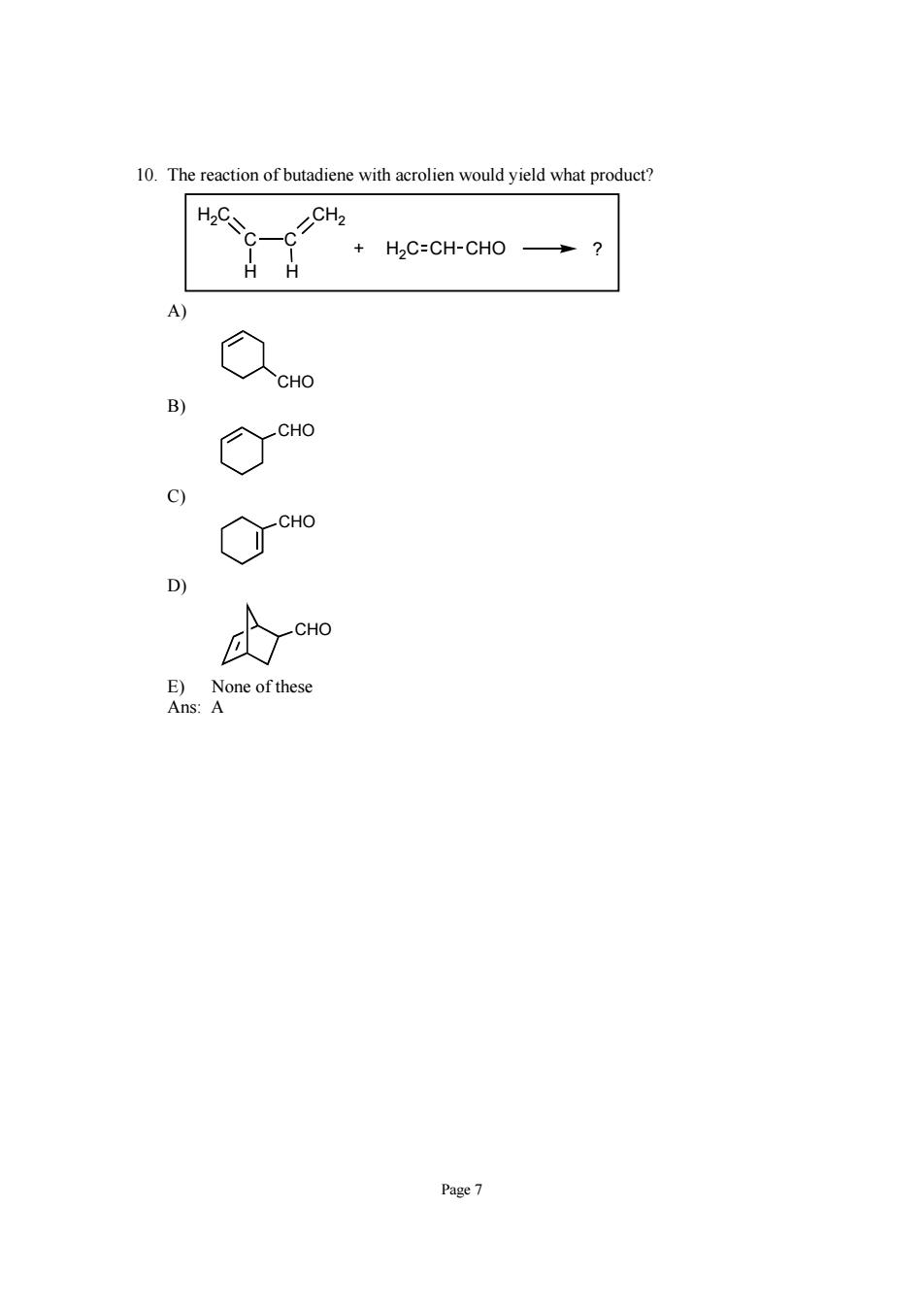
10.The reaction of butadiene with acrolien would yield what product? H2C CH2 +HC=CH-CHO→? C) D None of these Page7
Page 7 10. The reaction of butadiene with acrolien would yield what product? + H2C CH CHO ? H2C C C CH2 H H A) CHO B) CHO C) CHO D) CHO E) None of these Ans: A
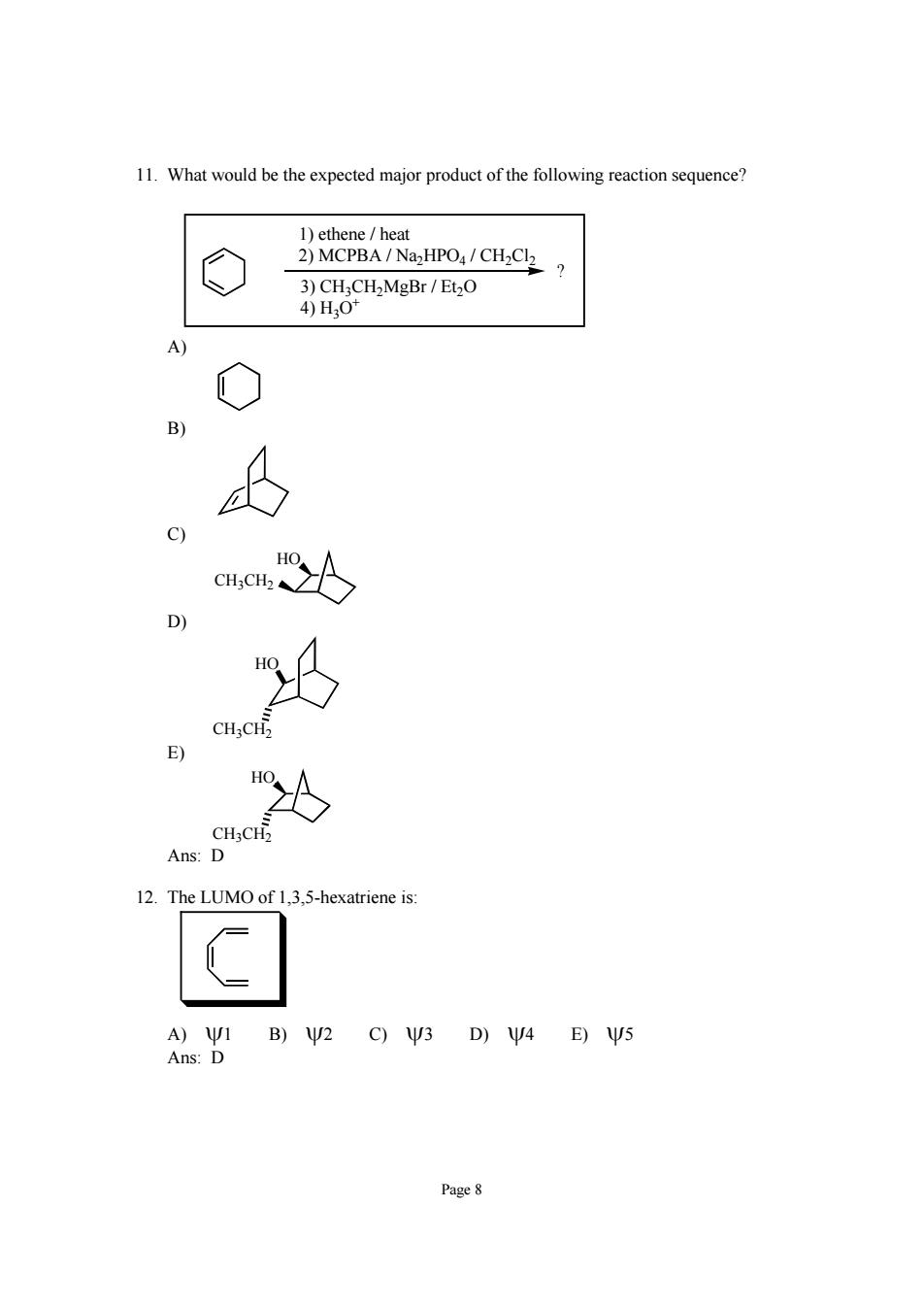
11.What would be the expected major product of the following reaction sequence? 1)ethene heat 2)MCPBA/NazHPO/CH2Cl2 CHMeBw/E0 CH;CH E) Ans:D 12.The LUMO of 1,3,5-hexatriene is: A)Ψ1B)Ψ2C)Ψ3D)Ψ4E)Ψ5 Ans:D Page8
Page 8 11. What would be the expected major product of the following reaction sequence? 1) ethene / heat 2) MCPBA / Na2HPO4 / CH2Cl2 3) CH3CH2MgBr / Et2O 4) H3O+ ? A) B) C) CH3CH2 HO D) HO CH3CH2 E) HO CH3CH2 Ans: D 12. The LUMO of 1,3,5-hexatriene is: A) ψ1 B) ψ2 C) ψ3 D) ψ4 E) ψ5 Ans: D

13.A typical Diels-Alder reaction involves an electron-rich diene and an electron-rich dienophil an ectron-c dienon deeanaaneeeronpo0denophie E) a non-substituted diene and a non-substituted dienophile. Ans:C 14.What would be the major product of the following reaction? heat CH E)None ofthese Ans:C Page9
Page 9 13. A typical Diels-Alder reaction involves A) an electron-rich diene and an electron-rich dienophile. B) an electron-poor diene and an electron-rich dienophile. C) an electron-rich diene and an electron-poor dienophile. D) an electron-poor diene and an electron-poor dienophile. E) a non-substituted diene and a non-substituted dienophile. Ans: C 14. What would be the major product of the following reaction? CH3 CH3 CO2Et CO2Et + ? heat A) CH3 CH3 CO2Et CO2Et B) CH3 CH3 CO2Et CO2Et C) CH3 CH3 CO2Et CO2Et D) CH3 H3C CO2Et CO2Et E) None of these Ans: C
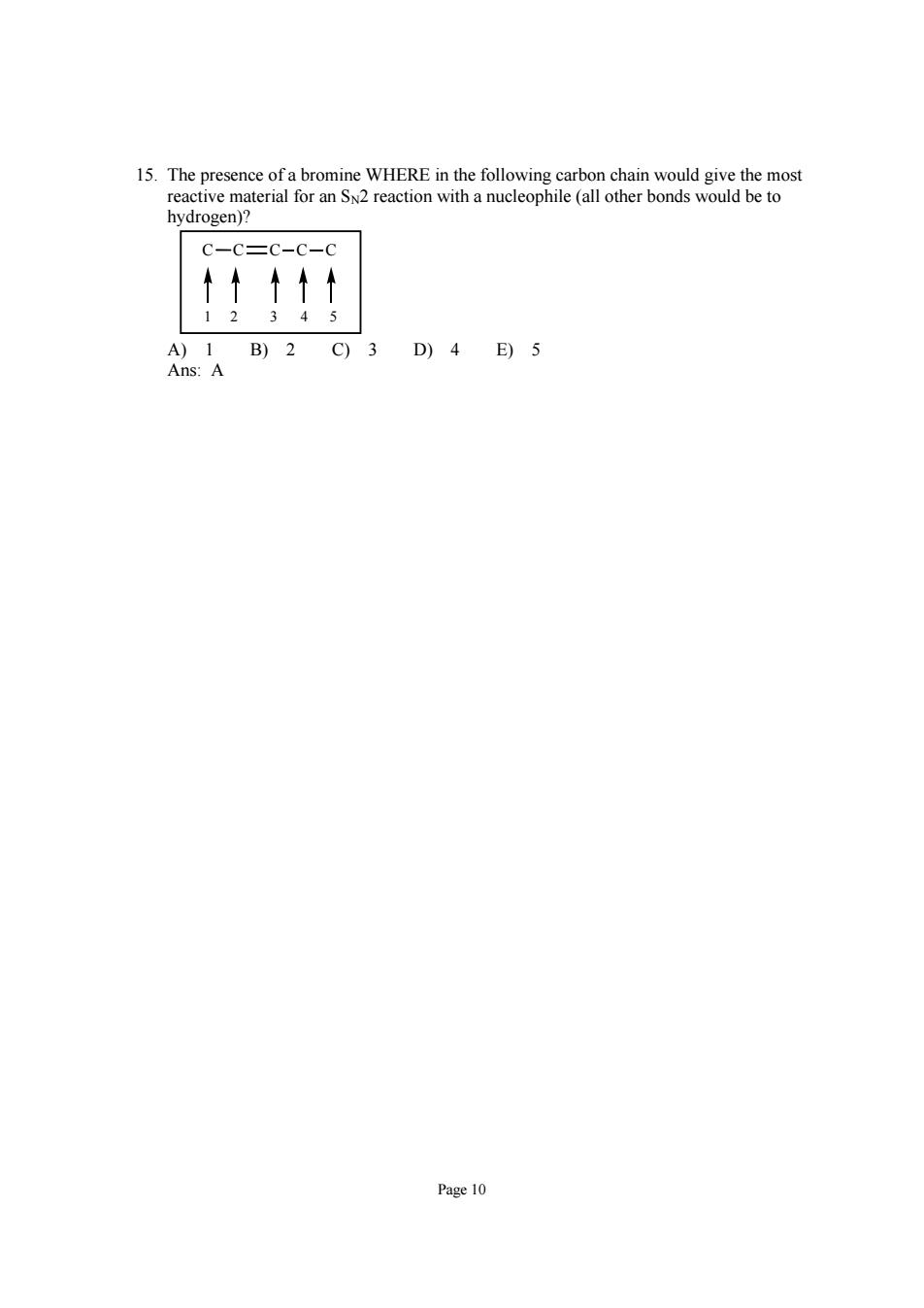
dogenyleTdormSn2reactionwihanmucleopi cc-0c0 A)1B)2C) 3 D)4E)5 Ans:A Page 10
Page 10 15. The presence of a bromine WHERE in the following carbon chain would give the most reactive material for an SN2 reaction with a nucleophile (all other bonds would be to hydrogen)? C C CC C 12 3 4 5 A) 1 B) 2 C) 3 D) 4 E) 5 Ans: A